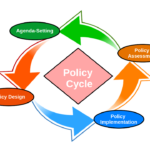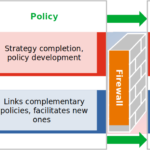The new RC/RR in Swaziland has strong interest in supporting e-gov work in the country and the government seems to be very receptive to the idea. I have received this communication from the RR (RZ Swailand Egov letter) which has specific proposals for our support. RBA HQ is also getting involved but has interest in making this larger than just e-governance. Here is my comments to the RC/RR letter.
1. As you are aware, Swaziland has had its share of e-governance strategies and ICT master plans which I see as positive steps for the country to start harnessing the potential of ICTs to impact on development. This does denote that the country’s leadership has a vision on this.
2. In the past 10/12 years we have helped close to 70 countries develop ICTD or e-governance strategies using our non-prescriptive framework and advising them at different levels in the process. We know form that vast experience that doing a strategy in itself is not a difficult task and that in the end countries will decide on the final content of such
strategies. Being that as it may, the issues starts countries try to identify priority areas and then proceed to implement them -usually with little financial resources. As as result, many of these strategies remain just that: great strategy papers that cannot be moved into the next step.
3. Our approach to ICTD and e-governance is unique in this fashion as we recommend our country partners to link ANY ICTD or e-governance strategy to national development plans and internationally agreed development goals such as the MDGs. As we see it, many developing countries, and specially the LDCs, already have complex and overcrowded
development agendas and the last thing we really want to to is add one more priority or area of work the list. Instead, what we suggest to our partners is to see ICTs as part of the solution to many of the current development challenges and gaps. For example, in next door Mozambique we were able to link the ICTD/egov strategy to their national poverty reduction strategy (called PARPA) and, in this light, we assisted the government in developing a implementation strategy that had 25 priority areas. And this was done on an open and multi-stakeholder basis covering all ten provinces of the country and getting inputs from all sectors.
4. In our experience, this approach is more effective in terms of human development impact than having a process in which technology seems to lead the pack and somehow becomes the end goal. We know for a fact that this approach in developing countries gets no support and when it does it doe snot produce any tangible development results. My recommendation here is that we take this approach and start connecting all these dots. On the other hand, we also find the reverse situation which is actually more common in our programme countries. That is, policy makers who work on traditional development areas (take PAR, LG, justice, etc.) do not see any links between their work and the use of ICTs in their portfolios and policies, and thus ignore them altogether. I think this is as negative on development as the “techie” approach mentioned before. There is not way any country in the 21st Century can overcome the overall development challenges without using ICTs in one way or another. We thus also need to close what I call a “lethal” policy gap.
5. One concrete way we can do this in our programme countries is to take a closer look at current UNDAFs and CPDs and find that common ground. As you are aware, the Administrator has already sent a note to all RC/RRs in this regard and we are leading this process working closely with UNDP.
6. Now, in the case of Swaziland, the UNDAF does provide fertile ground to start work in this regard. And also fortunately, the UNDAF does mention ICTs as one of the key cross-cutting themes that the country needs to address. Without entering in details here, at least three of the four outcomes envisaged in the UNDAF (Poverty, basic public services and governance can be directly linked to e-governance issues and priorities. As an example. take basic social services. Many of them can be delivered no only on a lower cost basis but also on a larger scale by strategically deploying and using ICTs.
7. In this light, I will like to suggest the following steps, which in a way complement the ones mentioned in your letter:
– Revisit current ICTD and e-gov strategies and linked them to overall national development priorities and have the white paper being prepared reflect this
– By the same token, also link them (and map) to current UNDAF outcomes and ongoing activities by the various agencies (specially with UNDP’s work)
– Seek ways to identify short, medium and long term priorities allowing for multi-stakeholder participation and inputs
– Identify and/or set up the adequate institutional mechanism that can coordinate the overall process and has sufficient authority to bring line ministries on board
– Ensure full buy in from top government level who can corroborate current political will to support ICT investments to support development priorities (seek endorsement of cabinet of ministers)
– Increase awareness of decision makers and legislators on the critical importance of ICTs and promote adequate regulatory environments
– Explore the use of mobile technologies in delivering e-governance services to all the population
– Implement a capacity assessment of public institutions to determine current needs and the gaps that need to be addressed to systematically use ICTs in public administration
I might be in South Africa next month so I could drop by (so to speak) for a couple of days to meet relevant parties and discuss some of these ideas tete-a-tete.
Hope this is helpful.
Looking forward to your response and comments.
Cheers, Raúl





